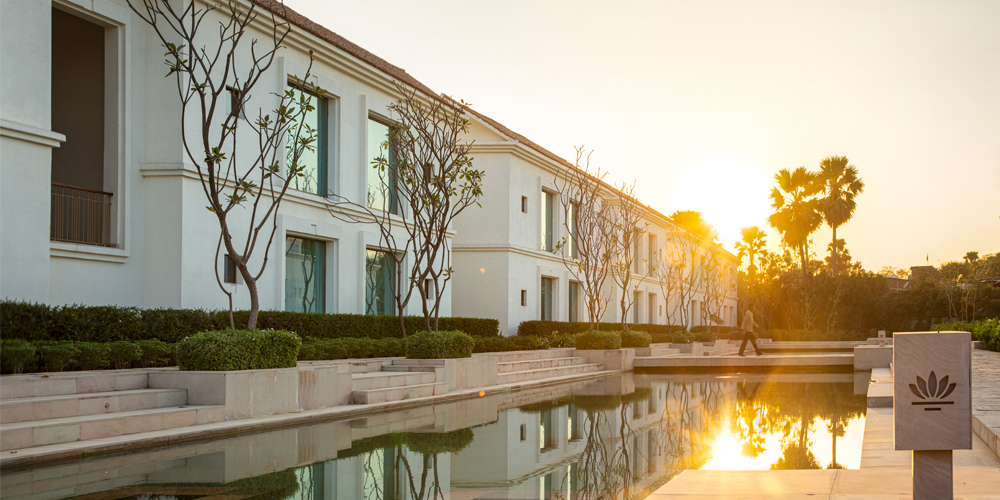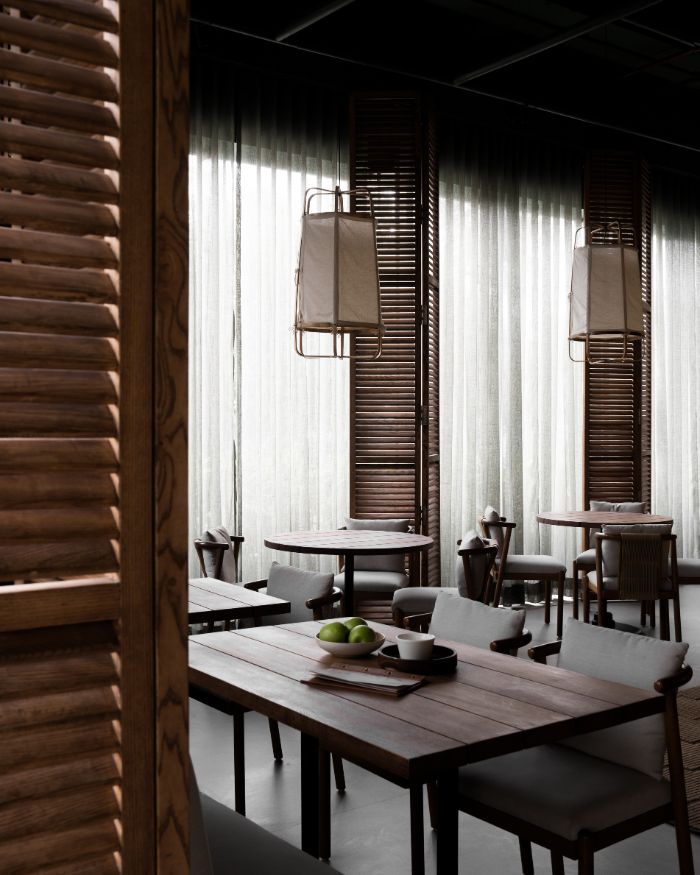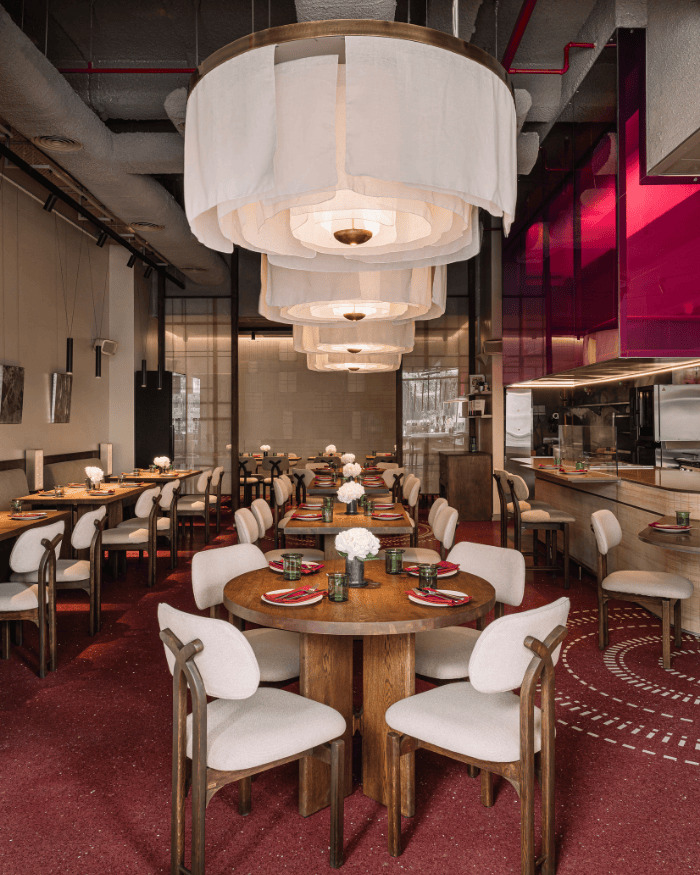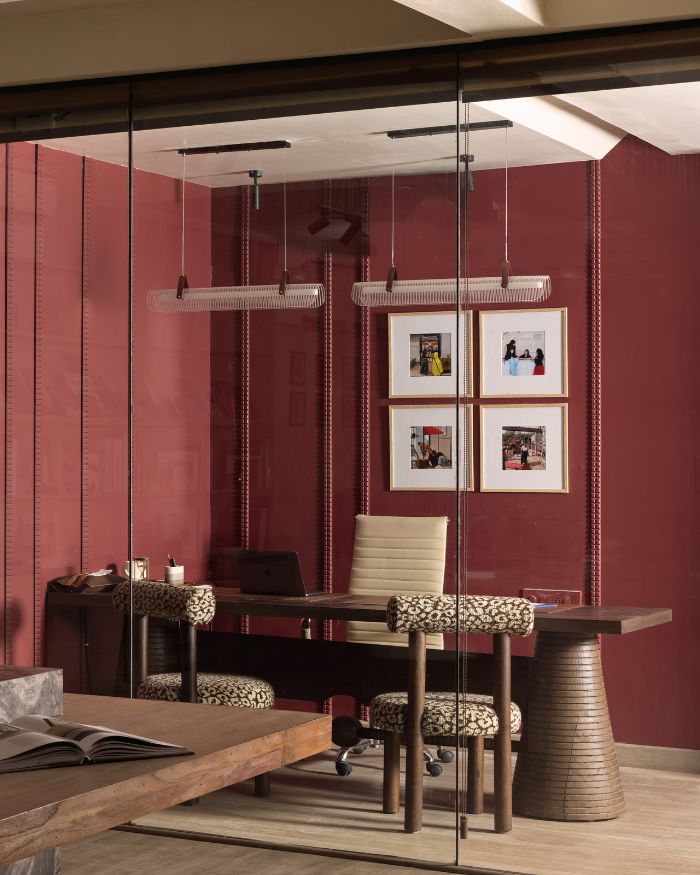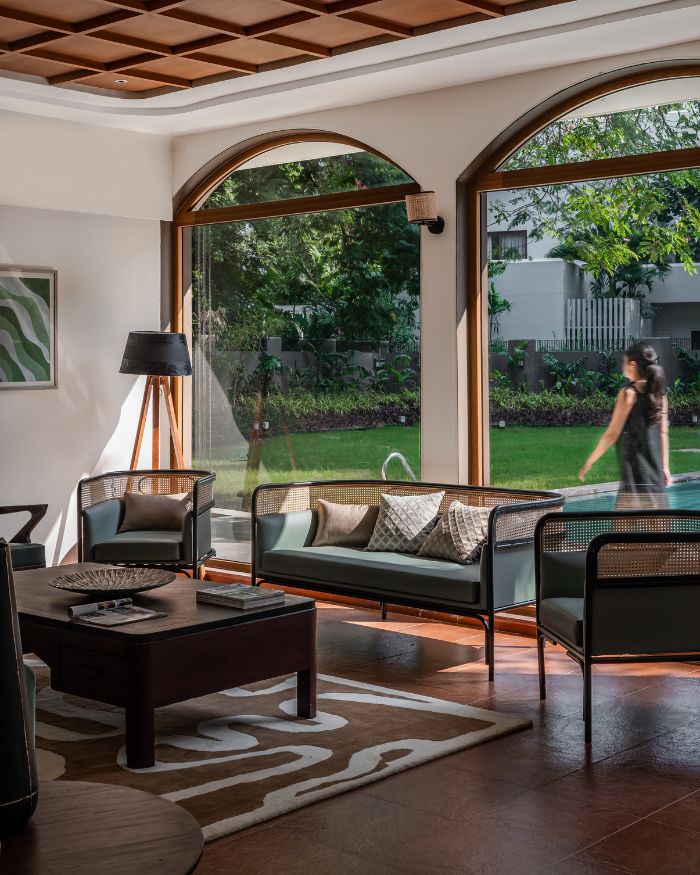Spiritual. Sentient. Sacred. These words only begin to touch the surface of Bodh Gaya, a town in Bihar, in the northeastern part of India. The destination is widely regarded as the place where the Buddha received enlightenment – hence also often called ‘the enlightened one’ – making Bodh Gaya one of the holiest and oldest pilgrimage sites in the world. These sentiments come bundled up at this serene, sprawling hotel pronounced as a meditative design venue by SJK Architects and its partners Shimul Javeri Kadri, Vaishali Mangalvedhekar, Sarika Shetty and Roshni Kshirsagar, spread over 76,000 sq ft.
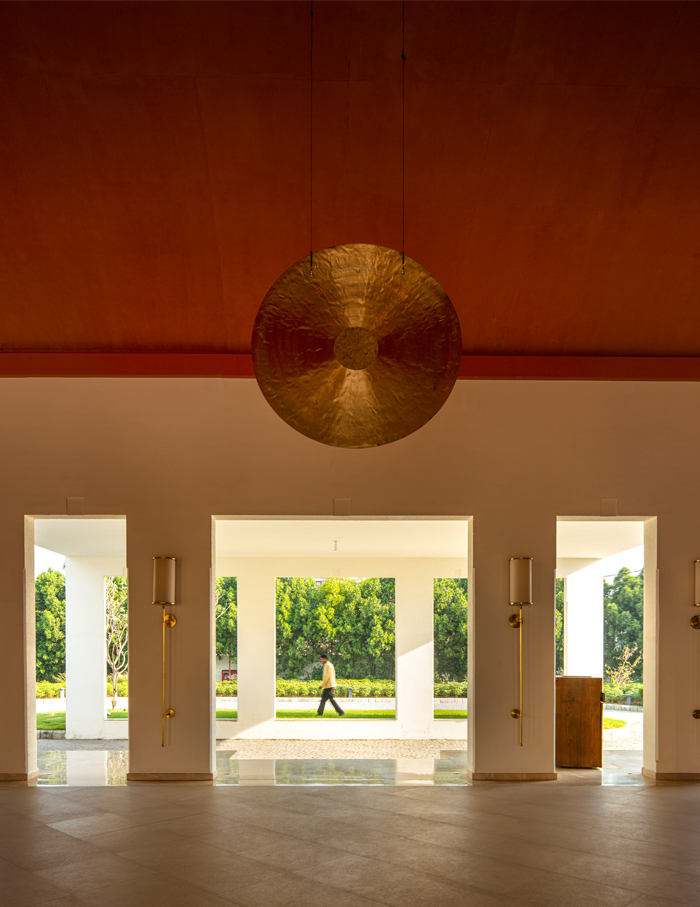
Catering to religious tourism in the area, the Marasa Sarovar Premiere hotel, not far from the Mahabodhi Temple, encompasses 78 rooms, and is divided into two blocks — north for public use, and south for guest rooms. The public spaces are arranged around a courtyard that forms the physical and emotional heart of the hotel. Dividing the blocks is a linear waterbody with floating lotuses that are synonymous with purity in Buddhism.
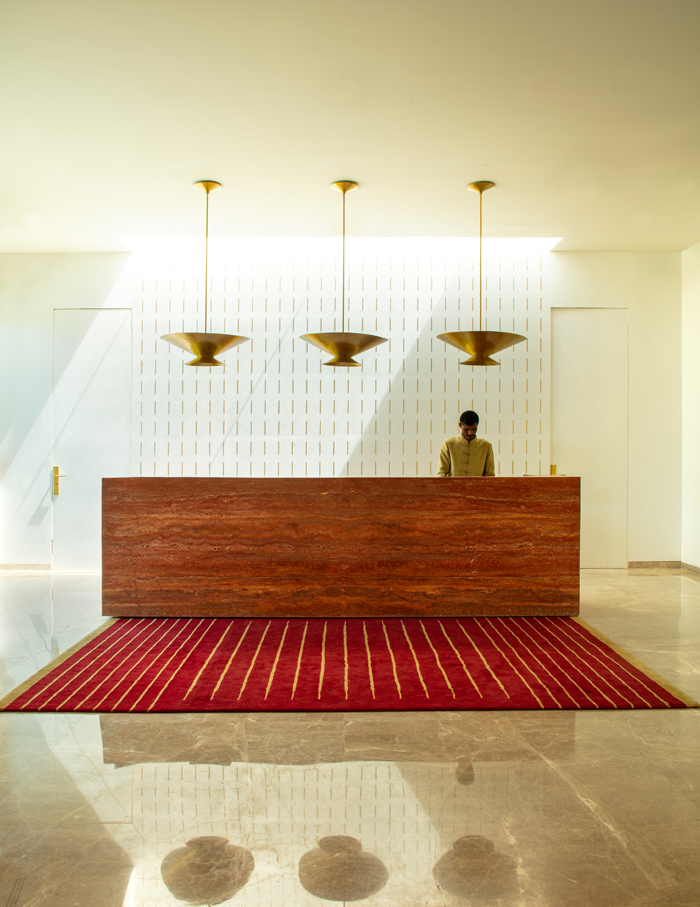
Tugging at memory and emotion
Embodying the tenets of Buddhism, the hotel uses memory and emotion to immerse one into the architecture. Memory is tapped into through features reminiscent of traditional Buddhist architecture. Vaults, corbelled arches and stepped jambs are given a contemporary face-lift at this hotel. Emotions are invoked through spaces that make one feel as though they are viewing the different phases of life. The Buddhist ethos of simplicity, compassion and serenity are conveyed through a series of gestures.
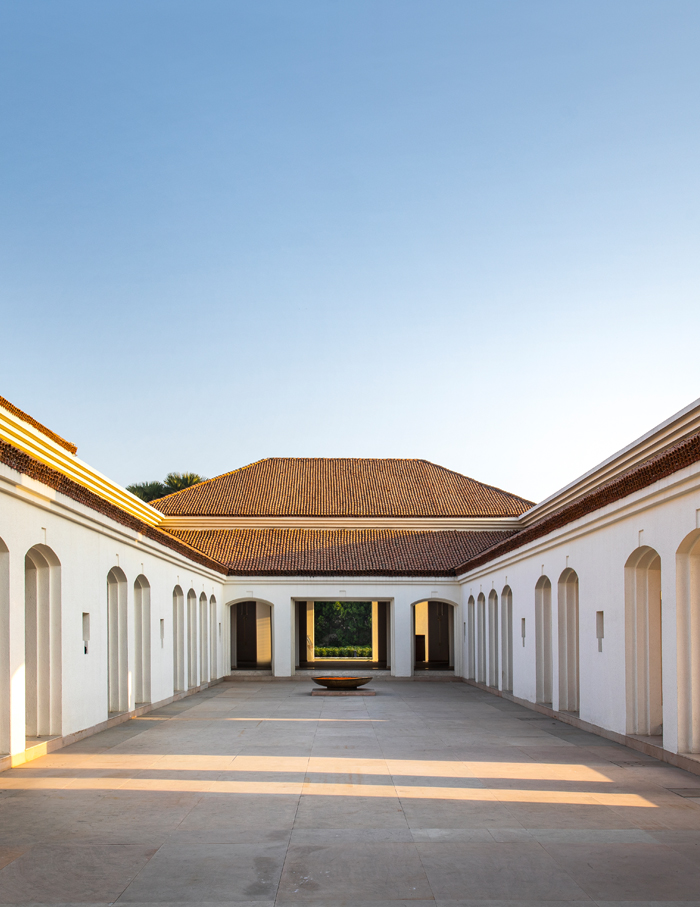
Seeping into the modern design of the artwork and signage are Buddhist philosophy and symbology. Easing navigation are the five pearls of wisdom expressed in the five public spaces. Each pearl of wisdom is associated with a mudra – a symbolic hand gesture – which is further associated with specific colours, seasons and elements. The public space of the spa-gym-pool represents the wisdom of ‘oneness with the earth’. It is associated with the colour blue that is reflected on the walls of the pool. The connection with the season of winter is represented through the motif of a bare tree on one of the walls. This pearl of wisdom is linked with the symbol of the vajra – an object extensively used in Tibetan Buddhist rituals – that is seen through an abstracted wall pattern.
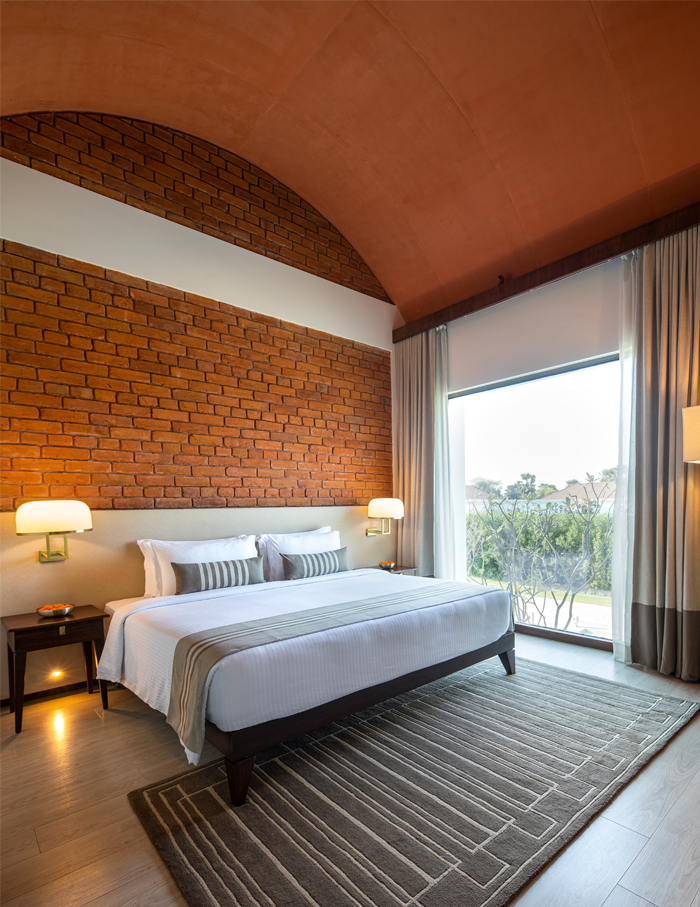
An immersion into Buddhism
In keeping with the Buddhist philosophy of respect and concern for all life, the roof of the hotel is made of locally made tiles which bring about an earthy visual appeal. The architects collaborated with 26 local families in 12 villages around Bodh Gaya to get 80,000 clay tiles handcrafted.
With a play of scale and proportion using courtyards, verandahs, arches and windows, the human scale is embraced. Forming a calming and tranquil envelope is a soothing colour palette of muted whites and warm terracotta.
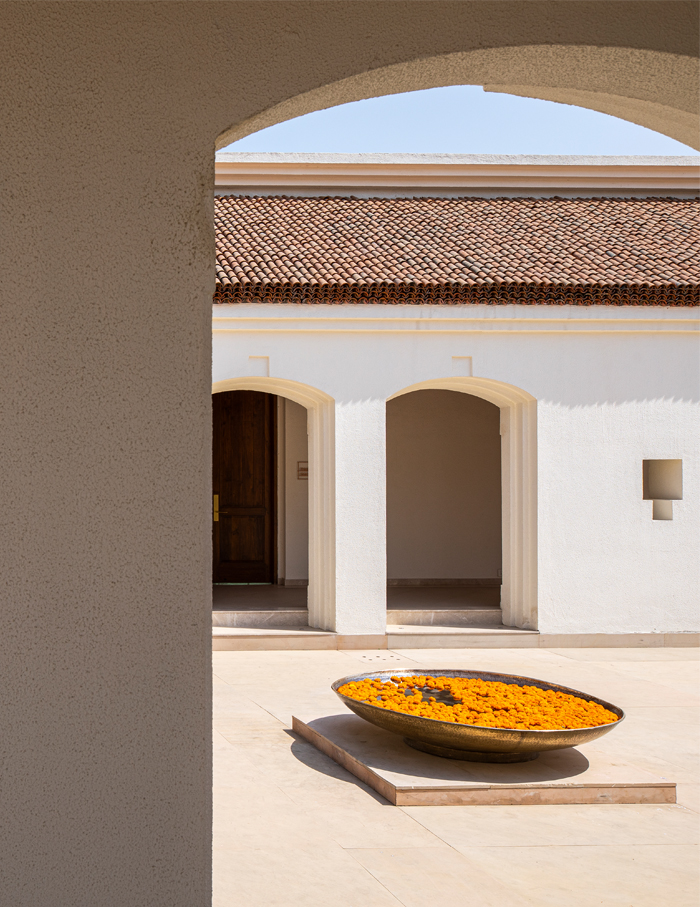
The sky and the earth
Along with Buddhist philosophies, the hotel is influenced by the local climate of the region. The blocks are oriented in such a way that energy consumption is low and the indoor temperatures are comfortable in all seasons.
The site is located on a low-lying paddy field, in close proximity to the Falgu river, which floods the nearby regions during monsoons. Hence, the architects mindfully decided to raise the site to prevent submerging. In the process, a pond was traced out in the lowest portion, on the eastside of the property, to double up as an emergency water holding area during flash floods. Rainwater is collected into a number of underground harvesting pits. These deep pits hold the water until it seeps into the earth.
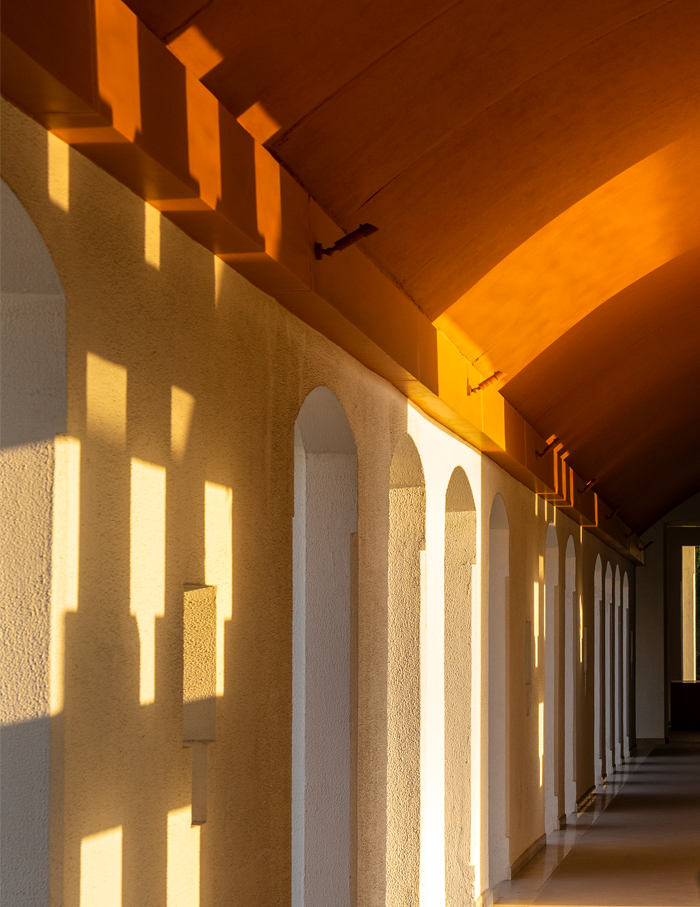
Imbuing a sense of calm with a meditative palette and by carving zen boroughs throughout, the team at SJK Architects has kept a close eye on every facet of the design. Marasa Sarovar Premiere thus witnesses a conscious confluence of practicality that touches boundaries with repose and the tenets of Buddhism, becoming a sanctuary that surrounds a banyan tree, symbolic of the tree under which the Buddha attained enlightenment.
Address: Marasa Sarovar Premiere, Bodhgaya
Ward No 5, Newtapur, Bodhgaya – 824231, Bihar
You may also like: The synergy of nature and luxury will proclaim to renew you at The Westin Resort & Spa, Himalayas





